
‘In February of 1995, Newsweek magazine published an article entitled “50 For the Future” , introducing a selected group of visionaries from different fields of computer technology. Among a predominant majority of North-American names, composed of businessmen, journalists, physics, engineers, computer systems and software developers, the inclusion of Haruhiko Shono, representing the digital games domain, was by no means startling.
‘Shortly before the turn to the 1990’s decade, the Personal Computer industry was embarking on a decisive process of unification with emerging and alternative forms of art. Consequentially, the use of CD-ROM as the standard media for software publication would cause dramatic changes to the digital games industry, namely with the inclusion of video and pre-recorded high quality audio. This unprecedented cutting-edge resource conveyed new possibilities that succeeded in fascinating movie makers, musicians, and painters among many other accomplished artists.
‘It was in this precise context that Haruhiko Shono was drawn into the trade of videogame design, after refining his techniques in the world of digital video production and computer graphics. Teaming up with fellow artists, he signed a contract with videogame publisher Synergy and Toshiba EMI for the conception of a hybrid PC and Macintosh game: ALICE – AN INTERACTIVE MUSEUM, released in 1991, was one of the earliest subjective point-and-click adventures using pre-rendered images.
‘Inside the unique space of a virtual museum, the player is able to discover the surrealist paintings of Kuniyoshi Kaneko, inspired by theme of Lewis Carrol’s literary masterpiece Alice in Wonderland. Scattered throughout the different rooms of the gallery is a deck of playing cards which the player must retrieve, while interacting with the tantalizing puzzles in the form of pictures. On account of its effective tridimensional promenade and highly artistic values, ALICE won the AVA Multimedia Grand Prix MITI ‘s Minister’s Prize in 1991.
‘Continuing his work with Synergy, Shono unveiled a similar adventure scheme in yet another PC/Mac title under the name L-ZONE, published in 1992. Experimental and mysterious, its cybernetic environment was unlike any other in its day: amidst the large industrial venues and silos overflowing with mainframes and other electronic paraphernalia, the feeling of solitude and lack of concise objectives helped to build up an outlandish form of tension: paradoxically, Shono and his team generate this scenery of technological asphyxia using the computer as medium. Its audiovisual excellence, namely the vanguardist techno sound clips and loops, appealed to different players on an international scale, making L-ZONE one of the best sold products of its time and the winner of the ’92 Multimedia Association Chairman’s Award.
‘The year of 1993 was of particular importance to the pursuit of Haruhiko Shono. Taking exceptional advantage of the maturation of the game design techniques employed in his debuting titles, he generated an original project which would later become the indisputable reference of his professional career: GADGET: INVENTION, TRAVEL AND ADVENTURE, distributed that year in markets around the world, would soon convert itself into one of the most influential digital works ever made. Combining 256-color images with black and white Quicktime video technology, Shono molded a virtual sphere interweaving art deco with industrial design as background for the depiction of an obscure future where reality and induced illusion are indistinct.
‘In GADGET, Shono expressed his exceptional taste for machinery, not only with recurrent use of trains, the suggestive one-track means of transportation recurrently used during the game, but also with the introduction of a vital element to the brilliant narrative named the Sensorama – a menacing device capable of altering the perception of reality. While the narrative was intricate and exceedingly ambiguous, unlike any other in its day, the sheer visual spectacle and intriguing ambience caused quite a shock among the unwary community of players, generating enough sales to have GADGET rank as one of the best-selling multimedia CD-ROMs of all time – and, once more, winner of the famed Multimedia Grand Prix.
‘From 1993 to 1997, Shono sought to explore the potential of this dark futuristic setting further. Not long after the release of the game, a book under the name Inside Out With Gadget was published, comprising an impressive number superior computer generated images together with a series of written texts in the form of memos, reports and diary entries scientists, politicians and other characters portrayed in the game. Soon thereafter, the Gadget Mindscapes film followed, using video rendering quality that was impossible to include in the game, accompanied by an extended version the ethereal soundtrack composed by Koji Ueno.
‘The final installment of this universe was perhaps the most significant of all: recreating the original game, Cryo published GADGET – PAST AS FUTURE, a remake of the 1993 game using new and improved full-color video sequences, as well as extended features that were not available before. This release reignited the interest for the game, in an impressive 4 CD release that was translated and dubbed into several languages. In spite of the awards and recognition from a die-hard CD-ROM public, the last half of the decade was invariably defined by the growth in real time 3D technology. The technologies in which Haruhiko Shono specialized throughout his career, based mostly on CGI and Director-based programs, were demoted from dominant to auxiliary. Because of such radical changes in the industry, GADGET: PAST AS FUTURE became his last project as a game designer.
‘With the increasing demand for pre-rendered computer graphics technology in the fields of film and television, Haruhiko Shono opted to face new challenges. The most notable of which was the 2004 motion picture Casshern, a Japanese science fiction and fantasy motion picture that thrilled audiences from all over the world. Based on an early TV Anime series, this film was often described by critics as Japan’s answer to Hollywood’s special effect blockbusters, since Casshern presented special digital treatment for almost every shot. Shono participated actively in the production of the film merging live action footage with digital backgrounds and additional special effects.’ — coregamers
___
Stills
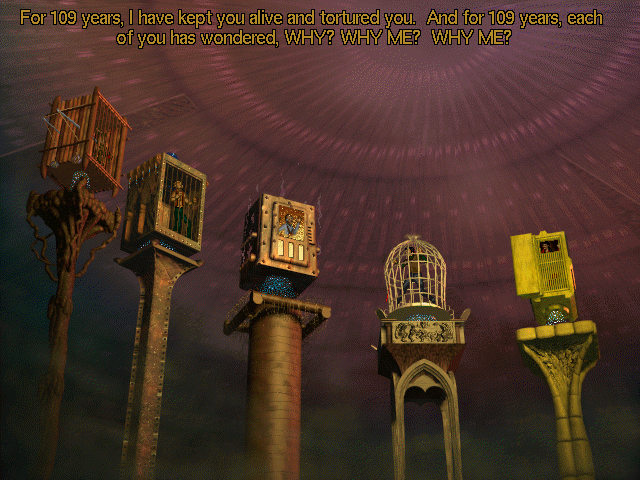
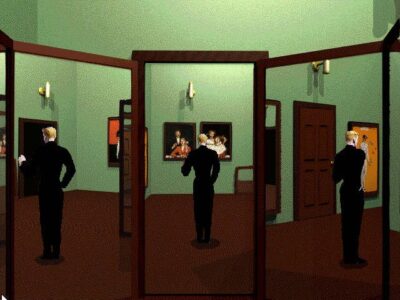
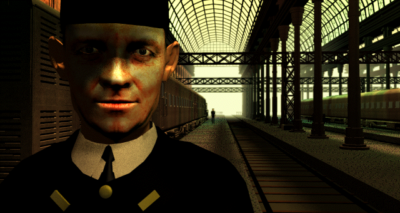
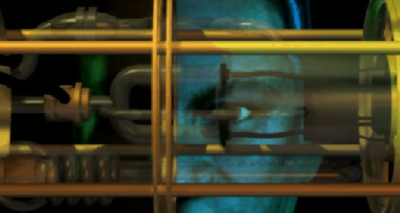

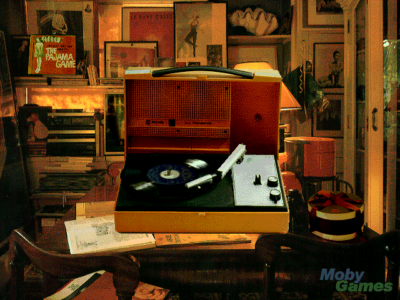
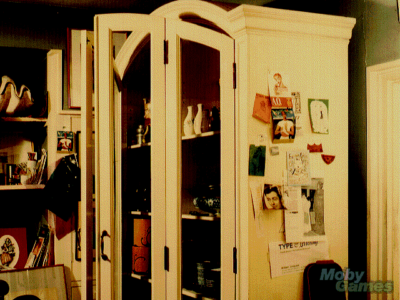
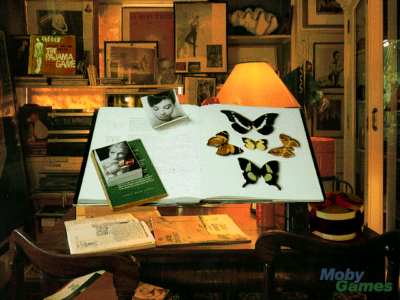


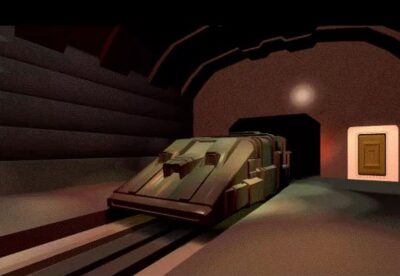
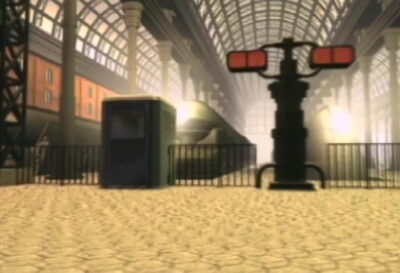
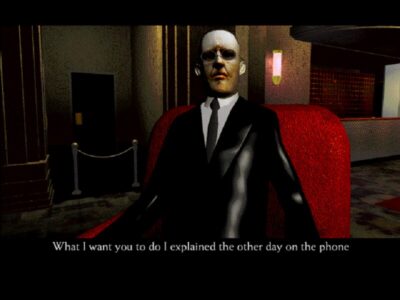
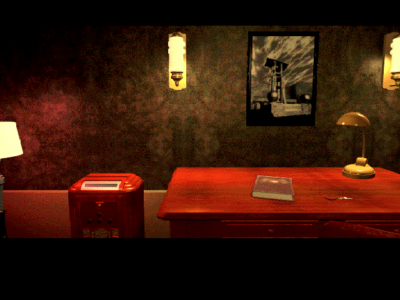


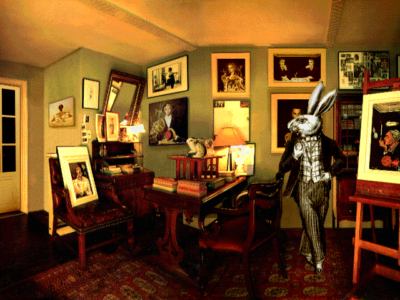
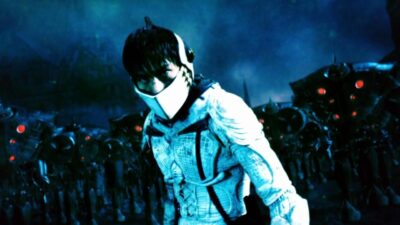





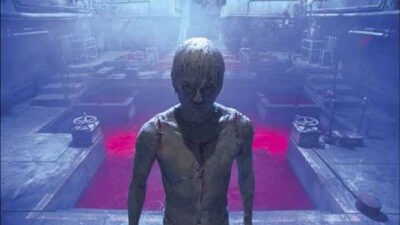





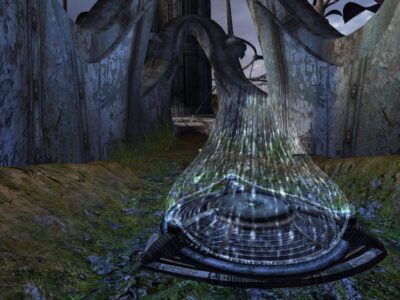
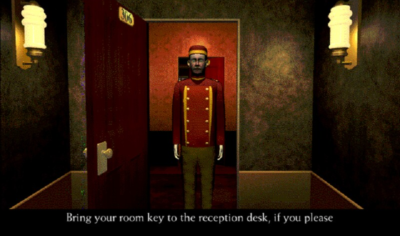
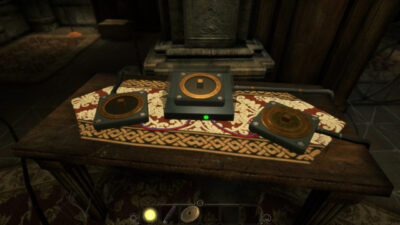

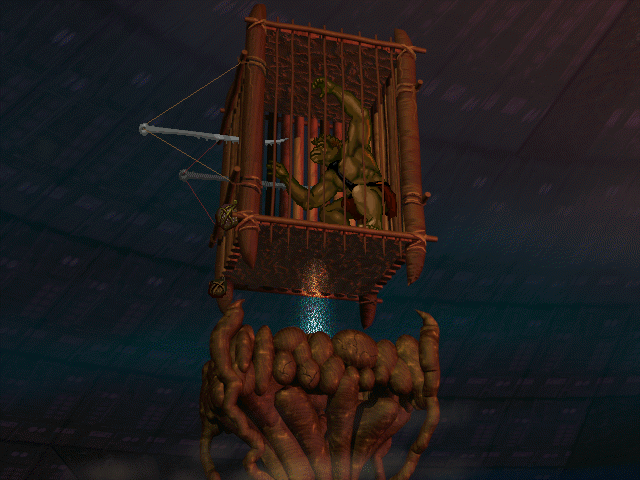
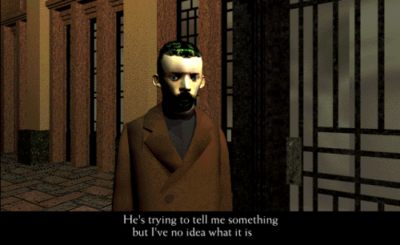
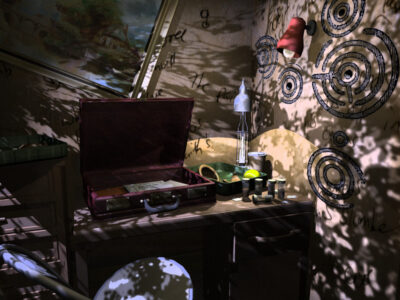
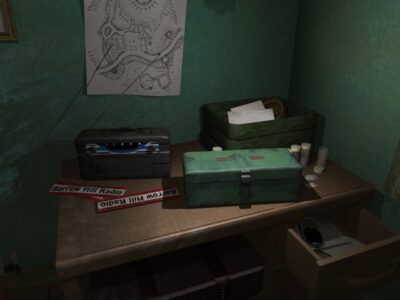

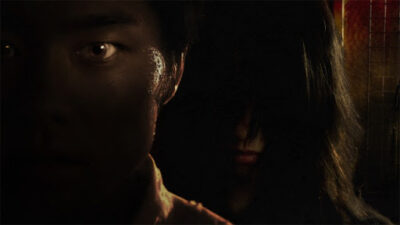
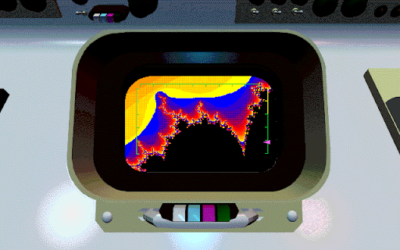
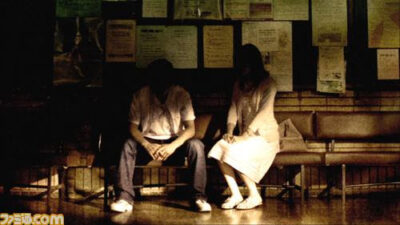
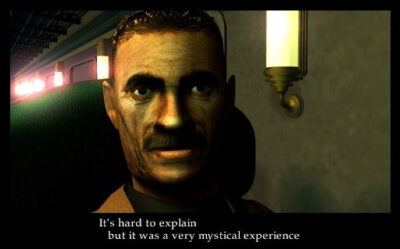
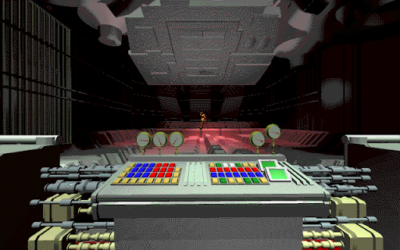
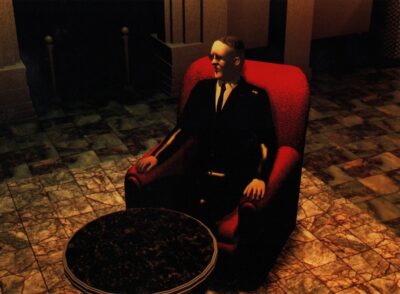

____
Further
Haruhiko Shono @ Wikipedia
WILL,LTD.
Haruhiko Shono: A Prophet of the Digital Age
HS @ Letterboxd
HS @ Facebook
Book: ‘Inside Out with Gadget’
CD: ‘Preview And Reprise Haruhiko Shono’
Alice: An Interactive Museum reviewed
Unreleased Haruhiko Shono Film Projects
Without further ado: Haruhiko Shono
____
Extras
Koji Ueno – Tranquillity
Urban Japan Documentary | Tokyo Noise
光 / ヒカキン & セイキン
_____
Interview
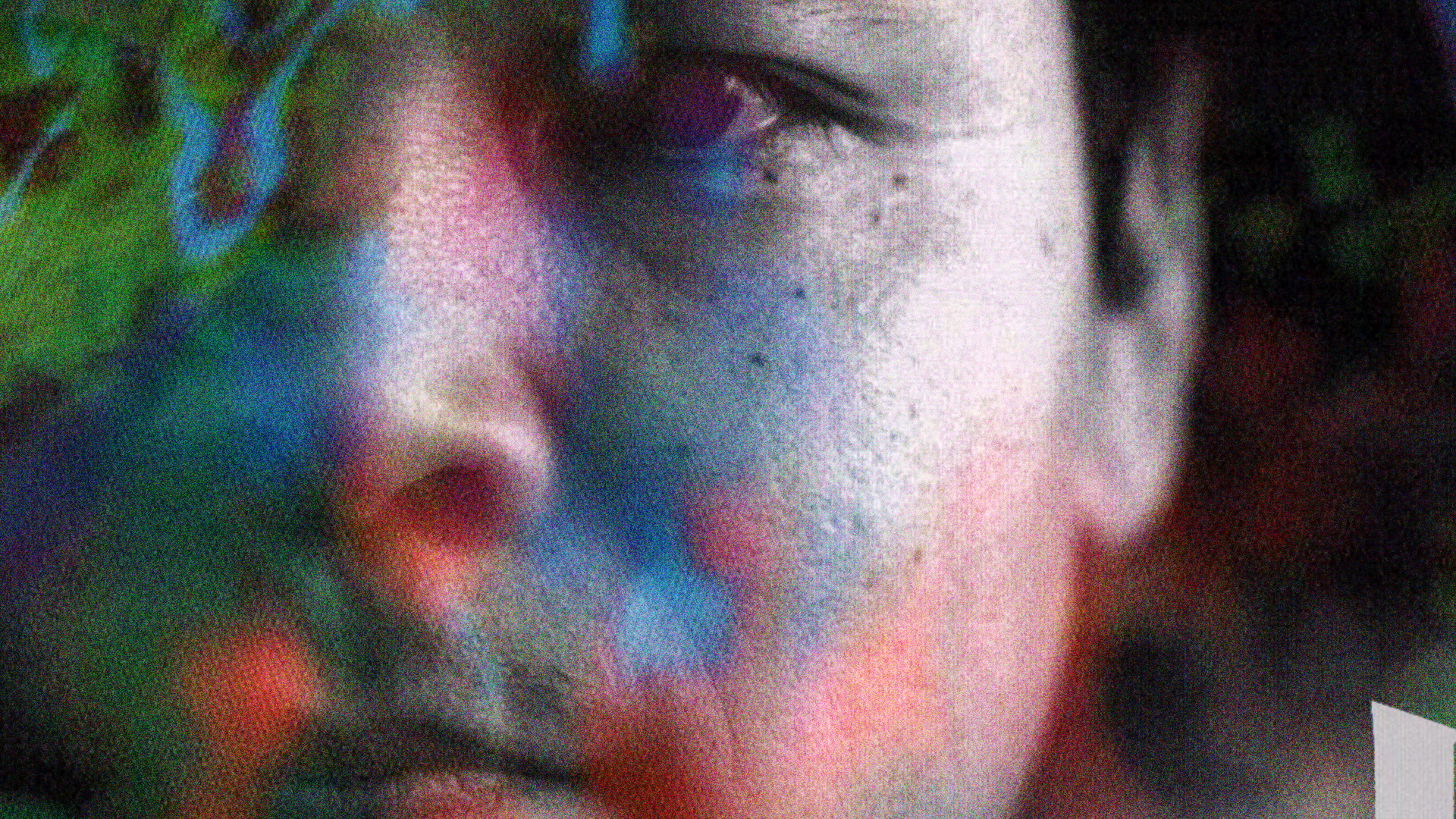
COREGAMERS : Even before completing your studies, you started to develop several works that were closely related to high definition video, computer graphics and new media in general. What has captivated you in these new forms of expression?
Haruhiko SHONO : Although I studied Graphic Design at university, I was more interested in images and music than in paper-based design, so, taking influence from video artists like Bill Viola and Nam June Paik, I began work on video projects. Original music was necessary too, so I also began composing using a PC at this time. From then on I made use of various technologies and came to create ‘new media’ video works, so to speak. In 1985 I formed a performance group called ‘Radical TV’, and at concerts we would set the stage with a giant screen and tens of other monitors and create a video in real time, similar to current VJ video performances, as they are called, although, because they were improvised in a short time, the style was radically different from modern creations.
CG : I assume there must have been some serious limitations imposed by the technology available at the time: what sort of techniques and software did you use back then?
SHONO : At that time, the main piece of equipment we used was a Fairlight CVI (Computer Video Instrument) for real time image processing, and even now, it is very impressive. After that, with the introduction of Commodore’s Amiga, the popular process of video production at that time began to move away from video photography and in-studio editing, toward personal desktop works. It was also around this time that I began making full-blown CG-based animation in both 2D and 3D. However, because at that time I was using media recorded to floppy disks, I had to come up with ways to work within the restrictions of a limited data capacity and colour palette.
For example, the data for a TV programme’s title sequence would take up 5 whole floppy disks. Before CD-ROM technology came about, high storage capacity media, like we have today, was inconceivable. I was only able to make low resolution videos, but I came to have confidence in the potential of desktop video creations. I think the appeal of the expressive power of this medium is being able to witness the unfolding potential of expressiveness, thanks to technological innovation.
It’s very stimulating to see expressive power advancing, regardless of personal skill level. However, because the expression itself is also swift to grow stale, it’s often the case that hard work made during that time span amounts to nothing. Nevertheless, the moment you touch on a new expressive possibility, it’s always stimulating and deeply interesting.
CG : It was only sometime after that you decided to explore the potential of CD-ROM, having created a group of videogames or interactive experiences that received some of the most important Multimedia awards of their day. By then, what was your opinion of the video game medium – were you a video game player?
SHONO : Around 1989, I was doing work in TV and video which took very little time to complete, so I desired a project that would require more time and careful deliberation. This was the period when the creative environment, based on Mac technology, also allowed for high resolution video works, and the likes of Photoshop and MacroMind Director (now Adobe Director) had come out, so I wanted to produce a work that, even with a single picture, could have persuasive power. Also, I was busy with several CD-ROM works, so it was very confusing. Actually, I wasn’t so interested in video games originally and had only played a handful of Amiga games.
Nevertheless, I felt that video games had a certain allure, and many possibilities that were lacking in other types of video media. The allure was the interactivity of games, and they were a digital media that allowed video works in full CG. Movies and videos in linear media are limited to the axis of time, and production cannot escape those limitations. Furthermore, this was the period that movies and video began their process of digitization but, fundamentally, they were an analogue medium. Perfect videos in full CG were impossible. At that point in time, CD-ROM was the only medium that made full CG videos possible.
CG : ALICE INTERACTIVE MUSEUM is by far one of your most recognized works, bringing the exquisite art of Kuniyoshi Kaneko into the realm of digital products. Tell me how this joint project started and what did you try to achieve with this surrealist game design?
SHONO : In 1990, I started a project after discussing the transfer of images to CD-ROM with Kuniyoshi Kaneko, who was introduced to me by Masanori Awata, president of the publisher Synergy (who I got to know through magazine research). As originally suggested by the musician Kazuhiko Kato, I was already producing video works using a PC. After that, continuous meetings with Kuniyoshi Kaneko in his home studio resulted in not only his own work, but the transformation of that work into a game. In his studio there was a fascinating collection of work and countless strange items. I considered that compiling them into a simple book of paintings would not reveal their potential; but that as a video game, they could become something else entirely.
His studio was a bewitching place and I went around touching and investigating everything. Seeing the other side of his work, I felt that its contents held a great necessity. At this point we established the game concept of the Interactive Museum, which included Kuniyoshi Kaneko’s work. We then photographed an enormous amount of items as raw material, digitized all of them, but I remember what a great trouble it was, because at that time there were no digital cameras. In order to reproduce his room, we used Fractal Design’s Mac-based CG creation software – Ray Dream Designer.
Although there was no way we could make lifelike videos, the characteristic quirkiness we achieved is a very impressive addition to Kuniyoshi Kaneko’s style. Because ALICE was one of the earliest CD-ROM works, in the initial stages there were a great many challenges relating to the image compression and data transfer rate. A large amount of time was spend on data optimization, and it became necessary to compromise heavily on the part of artistic expression. While the expressive potential was greatly increased compared to analogue media of the time, at the same time we had to confront the many challenges presented by digital media.
CG : L-ZONE and GADGET , on the other hand, are much more linear titles; the first is essentially an audiovisual experience, a demonstration of high-resolution technological landscapes, while GADGET is a story-driven game with characters and dialogue. Was there a particular reason for this change in your design philosophy?
SHONO : ALICE had many small contrivances, but this was because the concept of the Interactive Museum required as much interactivity as possible, and inevitably this resulted in a high degree of freedom. However, it didn’t have a strong story, so the flow of the game was too free, and consequently there is a feeling of ambiguity to it. Personally, I think this is due to the fact that I was fussing over the details of interactivity, because it was my first video game.
L-ZONE was published the next year. As a science fiction fan, I had long held the modest desire to infiltrate a forbidden research facility and freely use the experimental technology found there, and we used this as a concept for this small scale project. When compared to my other two works, the preparation phase was short, and I really made it according to my own feelings. Because interactivity was a phenomenon that was narrowed down to the operation of equipment and its effects, when you compare L-ZONE to ALICE, the level of freedom is quite low. Since my aim with this work was to illustrate the dangerous allure that technology holds, it can also be seen as a rehearsal for GADGET.
It can even be seen as proof of my love for different types of machine switches and levers. 1993’s GADGET was originally planned to be a mixture of ALICE and L-ZONE, yet during the development process, we introduced full CG characters for the first time: situations involving conversations with those characters also evolved and it became necessary to attribute meaning and motives to their behaviour. To that end, we clarified the story and the importance attached to freely interactive events was reduced and the structure became more linear. I also think that this linear structure was necessary to maintain tension and to increase the persuasive power of the fictional world.
CG : I recently read an interview in which the Hollywood movie director Guillermo del Toro mentions GADGET as one of the most influential video games ever designed, adding that movies like The Matrix and Dark City were highly inspired by the game. GADGET is an uncommon game even by today’s standards. What inspired you to create this unique experience?
SHONO : In 1992 I started to work on GADGET and, as the title suggests, I quickly decided to give it a science fiction setting, expanding on the world I attempted in L-ZONE which was filled with strange devices. However, because I also had many ideas which, as with ALICE, were not science fiction related, I wanted to make a world which also reflected such things. I had long since held an interest in exterior and interior architectural designs which existed in the past but are now lost, as well as industrial goods and designs which were planned but never implemented – I had many ideas of this sort that I wanted to include.
Eventually I wanted reconstruct all of these things in my own way, designing an entire world in which they could exist. Although the genre of the game is science fiction, I was aiming to make a world with a serious, static impression, refraining as much as possible from adding convenient and high powered technology. I had a firm belief that we could manage the creation of such a world using full CG, but I felt that its realisation would also require full CG characters. In practice, the technology we had at that time could not have been used to create realistic characters like those which are possible nowadays. But I remember how hard it was in that atmosphere to produce something, having to make choices of hardware and software, establish a creative technique. The characters that appear in Gadget are like lifeless dolls. This is because in the game world, characters that ask too much and don’t fit in are judged.
Although they have the appearance of humans, realistic humans weren’t necessary, because what I needed were characters that added tension and persuasive power to this static world. The exposure time for the earliest portrait photos was very long, so the subjects’ poses and facial expressions seem stiff and unmoving: I think the persuasive power of those images is very strong. For example, the portraits of photographer August Sander have a powerful influence on me. One of the things that differentiate GADGET from other games is perhaps that while it used the latest technology of the time, the imagery is strongly reminiscent of the fascinating expressions of the past. Incidentally, I now base my concept designs for movies and games on what I experienced during this creative process.
___
Works
___________
Radical TV: TV War (1985)
‘Shono’s creative career began in 1985 with the formation of Radical TV. Shono was hired as a member of the visual performance unit, and here he gained an interest in the visual aspects of the film industry. With evidence of visual artistry talent already apparent, Shono was entrusted with the responsibility to act as lead visual display artist in Radical TV’s audio-visual display showcase at Expo ’85 entitled TV War, with music composed, arranged, & performed by Ryuichi Sakamoto. The display would be recognized as one of the most significant affirmations of the Japanese IDM subculture.’ — Bruno de Figueiredo
the entirety
_____________
Alice: An Interactive Museum (1991)
‘Alice: An Interactive Museum is a multimedia experience created by Haruhiko Shono and published by Toshiba EMI. At first appearance it seems to be simply a virtual art gallery featuring the artwork of Kuniyoshi Kaneko, but it turns out to be a whole adventure with secrets and surprises. Originally intended as a CD-ROM that merely contained digital transfers of Kaneko’s paintings. But after spending a lot of time with Shono, it transformed into an interactive work. Shono wanted to capture Kaneko’s “bewitching” studio in digital form through interactivity. He wanted you to poke around Kaneko’s space just as he did. There were no digital cameras used so all the photos are scans of analog photos. Considered one of the first multimedia “toys,” rather than a “game.” It was a breakthrough for the medium.’ — scummmvm
ALICE : AN INTERACTIVE MUSEUM – Gameplay
KaL Plays – Alice Interactive Museum
____________
Virtual Drug: Trance (1991)
‘Long before its release in DVD format, in 2001, Virtual Drug was possibly one of the first works made by Shono in the field of computer graphics and video – originally edited in 1990 in VHS. Together with a pair of special goggles (known commonly as Rave Spex), Virtual Drug is an essential item for all those interested in exploring the origins of the world of Gadget, namely the concept of the mind trip.’ — coregamers
the entirety
_____________
Virtual Drug: Flash/Zone (1992)
‘The LD jacket invites you to “TAKE A TRIP IN THE ENCHANTED WORLD, STIMULATING YOUR VISION AND HEARING… Virtual Drug works into your brain. It gives you an extraordinary intoxication effect which clears away your stress. It is not addictive, and it is safe, but please avoid long term uses with the 3D spectacles.”… It instructs you to, and I quote; 1. Set the LD, wear the 3D spectacles, take a comfortable distance from the TV screen ready to trip. 2. You will hear the VIRTUAL AUDIO SYSTEM on stereo, better effect can be heard with headphones. 3. Turn out the lights and ENJOY!’ — Alexis B
the entirety
____________
L-ZONE (1992)
‘There’s no dialogue in L-ZONE, or any words for that matter. To the extent that this game has a narrative, it’s incredibly vague, like an impression of a story without any specific people or places. A city on another planet. An underground lab. Colossal machines and living robots. A nefarious plan. A chance to escape.
‘The short journey of L-ZONE starts out on the surface of a mountainous red planet. You enter a train station, barely illuminated by a pale light. The tram whisks you away into an impossibly large industrial facility, where an unknown party has been amassing computers, engines, and robots. Did they abandon this complex years ago, or are they quietly waiting and watching from a distance? With each room, you encounter a new mystifying piece of equipment with dozens of buttons and dials that don’t have a clear function. What is all this meant for?
‘The game never pretends like half these weird machines have a real purpose. They must do something, surely, but only the people who built this facility would know. As far as the player is concerned, everything in this shadowy underground complex is just a big toy. Hit one of the colorful candy-shaped switches, and a monitor will flick on. Pull a lever, and a huge motor screeches to life. Plug a cable into a device, and it emits a distorted synthesizer noise.
‘Whatever this place is, it’s entrancing, and it invites you to fiddle with every control console you come across. But the excitement of playing with these machines goes hand-in-hand with their potential for danger. The deeper you go, the things you discover suggest that something sinister is happening here. You find models of a human brain and skeleton, and later, you encounter a robot restrained to an operating table. There’s more robots, half-functioning and buried in sand, in a room that feels like it’s supposed to be a mass grave. You see a firing range, where an endless assembly line of robots are being shot. They seem to be bleeding. Are they alive? Do they feel pain? What are those weapons being tested for?’ — Phil Salvador
L-ZONE – Intro & Gameplay
L-Zone PC Partial Walkthrough
___________
Gadget (1993)
‘Gadget is a point and click video game (though honestly more of a Visual Novel) directed by Haruhiko Shono and first released by Synergy Interactive in 1993. The game is set within a Diesel Punk nation called “The Empire,” ruled by the dictator Paulo Orlovsky, that feels and looks similar to that of George Orwell’s Nineteen Eighty-Four.
‘The plot is quite esoteric and ambiguous. A lot of it is left to interpretation or told only by inference. As far as anyone can tell; the nation commissioned this group of seven scientists (headed by Horselover Frost) to build a Mind-Control Device called “Sensorama” to brainwash dissidents. However, the scientists spotted at the observatory a comet approaching the earth, along with a mysterious giant spaceship, and realized the world was going to end and that the spaceship was there to rescue those who would come. So they hacked into the Sensorama so that those subjected to it would obey Horselover instead. The nation became suspicious of the scientists and has a secret agent investigate them. You take the role of that agent. Prior to the game, however, you get subjected to the Sensorama yourself, and the rest of the game is played under its influence.
‘You get assigned by your commanding officer, Theodore Slowslop, to investigate the scientists again. You travel around a bunch of train stations (the operative word of the game is “locomotive,” imagery of them abounds in the game to a borderline fetishistic degree), talking to the scientists at their secret laboratories, and under the Sensorama’s influence you begin helping them, gathering gizmos to complete a small-scale spaceship called the “Ark,” which, supposedly, the scientists will use to fly up to the big one. You are riddled throughout with hallucinations of what appears to be a post-apocalyptic swampland; and a creepy little boy who keeps appearing and disappearing, never saying a word, of whom the identity and intentions are completely unknown. By the end, very little is explained and it is left unclear exactly how much of the journey has even been real.
‘In appearance, the game is very similar to Myst. However, the game is entirely linear; you cannot do anything or travel anywhere that isn’t scripted. You click to move ahead and activate things; that’s it. There’s only one puzzle in the game; a relatively simple maze at the end when you navigate the Ark through some underground tunnels. It is therefore really more a Kinetic Novel that you play for the beautiful scenery and eerie atmosphere more than it is a Video Game.’ — tvtropes
English Longplay – No Commentary
_____________
Gadget – Past as Future (1997)
‘Touted as an interactive movie, Gadget – Past as Future is a compilation of QuickTime movies and 3-D graphically rendered backgrounds which immerses you in a mystery quest from the beginning. It seems there is a comet headed for earth and through enigmatic meetings and vague clues that only hint at this potentially cataclysmic event, you find yourself compelled to search for answers to this dilemma. You’ll encounter scientists, strange people, cryptic items and engage in odd conversations to gain information in your search for a mysterious person, Horselover, who seems to be at the heart of the matter. New and old technology blends in a fantastic visual mix as the story unfolds from a first-person interactive perspective.
‘Innovative, fantastic inventions (gadgets) and a journey of surrealistic travel awaits you in this unique world. Whether in interactive or cinematic mode, Gadget provides a moody, atmospheric trip while you are pursuing Horselover and his six research associates. Partly filmed in black and white for effect (most of the cinematics), the game is dark and fairly drips with its own unusual ambiance.
‘Gadget puts you in a strange surreal world were a comet appears to be heading for the earth. Most people dismiss this situation since apparently it won’t collide with us, however a group of scientists scramble to develop a way to stop this comet. Whether they want to destroy it, divert it, or whatever is unknown however, and you are charged with the task to find out what really is going on. This version was released in 1997 in Japan only.’ — The Video Game Library
Playthrough: “Gadget: Past as Future”
______________
Gadget Trips: Mindscapes (1998)
‘Visionary artist Haruhiko Shono directs this trippy computer-animated film about the Sensorama, a futuristic electromagnetic radiation device that causes its victims to experience an assortment of mind-bending hallucinations.’ — MUBI
the entire film
_____________
w/ Kazuaki Kyriya Casshern (2004)
‘In 2004, Casshern was hailed as one of the most visually impressive film features. This high budget movie production is a remake of a cult anime movie from 1973 (Neo Human Casshern), this time made using the latest CGI technology: Shono was invited to supervise this department and help give shape to this chaotic alternate history scenario.’ — coregamers
the entire film
____________
w/ Koichi Nakamura Imabikisou (2007)
‘Released exclusively in Japan for the PS3 and later for the Nintendo Wii, Imabikisou is horror adventure game that comes with top quality visuals and atmosphere. The production of this exquisite environment, reminiscent of recent Japanese terror film and television, was attained by intertwining live footage with real actors with pre-rendered locations – animated and filled with details. The game was released by Chunsoft, the reference for top quality adventures in Japan, also responsible for other prominent titles such as Machi or 428.’ — coregamers
Trailer
Imabikisou Gameplay Review
*
p.s. Hey. ** he show/_Black_Acrylic, ‘he show’ is a nice moniker, however it happened. No chocolate eggs for me either. Alas? Awesome! Wow, you’re being so wonderfully prolific with the sounds! Everyone, Ben ‘_Black_Acrylic’ Robinson’s divine avalanche for the ears aka his podcast Play Therapy v2.0 has a new episode up and out here, and, as always, hugely recommended. This one ‘how pillages sounds from across a future Earth and is going straight to a detention centre. Sounds great!’ Go here to luxuriate. Great, thanks, Ben! ** Steve, Ha, ‘master of the three-act structure’ indeed. Nice. It is quite odd that Clark makes the work he does while being totally paranoid about being thought gay, but I suppose that’s kind of in the work itself if you look closely. Interesting about ‘The Beast’. I am curious, but cautious. He’s very interesting, but definitely very uneven. Weekend was good. Saw two Bennings: ’13 Lakes’ again, and ‘John Krieg Exiting the Falk Corporation in 1971’ for the first time, both great. ** Barkley, Me too, thank you. Can’t wait for you to have the opportunity to see it. I’ve only read three, I think, Delanys: ‘Hogg’, ‘Madman’, and … another one I’m blanking on. I’ve dipped into his more sci-fi stuff, but it didn’t really grab me. Recommendations for other writing using that, off the top of my head: Peter Sotos, ‘Babyfucker’ by Urs Alleman, Sade obviously, … hm, I’ll have to think more. I love ‘Day Is Done’. I just saw it again recently as part of the Mike Kelley retrospective here. I think it’s one of Mike’s best later works. What did you think? Easter is history. I do miss getting Easter baskets full of chocolates and toys and fake grass and painted eggs and things. When I was a kid, my parents would leave a basket outside my siblings’ and my bedroom doors to find on Easter morning, supposedly plunked down by the Big Bunny. I hope you got one. ** Dominik, Hi!!! Okay, I’m gonna get that Broder for sure. I think the great After8 bookstore here will have it. Thanks! Have a great, great time with your mom, and tell me everything when you’re on the other side. And do ride as many dark rides at Prater as you can stomach so I can read the reviews. Love holding his nose and jumping off a cliff into a swirling ocean, G. ** Gramski 🐰, I did, and your bunny isn’t bad either. Thanks about Cannes, but, since we haven’t heard anything back yet, that’s probably a bad sign, so now we’re mostly steeling ourselves for bad news. Didn’t manage to eat chocolate, but no big. Fingers heavily crossed about the application! You could be here for the very mixed blessing of Paris during the Olympics. It could get crazy. Or not. Hugs galore. ** Harper, Hi. Job searching requires considerable pragmatism for sure. Gosh, me, I think I’d go see his band. Especially under the ‘writing re: him’ circumstances. Seems both colorful, scene-wise, and telling. The fronting and vulnerability of band members playing on stage is always really interesting if you’re into character studying. And, as you said, if it’s a bad experience, closure is good. Yeah, I mean, if it’s sort of the same, I’ve wanted for forever to meet up with George Miles’s brother, who was a teenaged friend of mine, and learn more about George’s end times, and fill him in about lots of things about George I think he doesn’t know, and I would in a heartbeat if I could reach him or if he reached out to me. I guess I’m saying getting the full or big picture about the guy you’re writing about seems invaluable if you can, and not doing that could be a big regret. Or something. I don’t know. Feel it out. Follow your instincts. Let me know what happens. And have a transfigurative week irregardless. ** Bill, Hi. The second night wasn’t as roundly excellent as the first, but 7038634357 was incredible. Zac and I really want to use a track by him over the end credits of ‘Room Temperature’, and we’re having coffee with him today to talk about it. Luckily he loved ‘Permanent Green Light’, so hopefully he’ll be into it. Clark is very, very concerned with being thought gay. It’s pretty odd considering. Excellent about the accomplished chunks! That’s great news! ** Justin, I think Clark is a very complicated dude, as I guess his work indicates. One of the stars of Zac’s and my film’ Permanent Green Light’ had been in Clark’s most recent film and had all these horror stories of what it was like to work with him which unfortunately I shouldn’t recount in public. Nice: the egg hiding. That does seem like it would have made whatever else worth it. I didn’t eat any chocolate, no. Thought to, but just spaced until it was Easter itself and every chocolate selling placed was closed. But it was okay. There’s alway today. Happy week start. ** Okay. Im a big fan of the pioneering computer game auteur Haruhiko Shono, especially his game ‘Gadget’, so I thought I’d do a day about him, simply and logically enough. See you tomorrow.




 Now available in North America
Now available in North America 
Hi Dennis ! Haha, we’ve been to the same screenings / concerts. I loved “John Krieg Exiting the Falk Corporation in 1971” : Benning warned the audience : “the two films put together can be overwhelming”. I must confess : I was a little bored by “American Dreams”. But the second film was great.
I loved yesterday’s concert : the 7038634357 piece was really good. I loved the Mark Fell / Rian Treanor thing too. (It made up for the saturday show which was quite boring – I was really disappointed by the Nivhek / Liz Harris thing – she is so great as Grouper…)
I think I didn’t thank you here for your recommendation of the Palais de Tokyo shows : La Morsure des termines / Rakajoo, and Lili Reynaud-Dewar too. I loved the three shows. Have you seen any good art shows lately in Paris ?
Have a nice day !! (maybe some Easter chocolate ??)
The one and only time I had a computer game was “Alice.” We bought the game on January 16, 1994, the evening before the big earthquake in Los Angeles. Our computer was our first computer, and I think the game “Alice” came with that Mac Computer. I had no patience to play it as a game, but seeing the images was an endless delight, which reminded me of Balthus’ paintings at the time. And yes, the computer and the game itself survive the earthquake. Although there was shattered glass and objects all around the computer. That was 30 years ago! 30 years of computer life – such a before and after experience.
Am a fellow computer game agnostic, but I can see from these clips the attraction of the form.
Spent my Bank Holiday Monday still without chocolate, but watched Billy Liar for the 1st time in literally decades. Must be the only example of Yorkshire New Wave cinema that I can think of, and it still holds up amazingly well. I’d completely forgotten how sad the ending is. When he chickens out of taking the train to London to live with Julie Christie, and instead chooses to live a wife of mediocrity in Bradford, it’s a tearjerker alright.
*Life
I’m not familiar with Shono’s work. Some of the stills look striking and gorgeous, especially considering the available tools then. Will definitely spend some time with the videos.
Ah, Easter. I remember being on a residency or something in Europe, and a lot of panic food shopping the day before.
Hope the meeting with 7038634357 goes well. And you’re able to score some delayed chocolate.
Last night I came across Larry Clark’s “Impaled” on Ubuweb. Not one of his more interesting films. Clearly establishes him as not gay, umm.
Bill
I’ve come down with a cold. Not looking forward to the next week.
From my time at Kim’s Video, I have a fond memory of Harmony Korine coming to the store with Clark in 1993 and guiding him to indie rock. Clark bought $100 worth of Pavement, Sebadoh, Liz Phair and Guided By Voices records. I would see them at clubs with the cast of KIDS (though I didn’t know who they were before it came out) around that time.
Did you see THE KIDS, a documentary about the making of KIDS? Clark does not come across well. In the scene where 10-year-old boys smoke blunts, he actually gave the children real weed. Even for the boys who were older teenagers, he took from the streets to a minor degree of celebrity and then ghosted them without any concern for the rest of their lives.
How many people watched VIRTUAL DRUG while actually tripping?
For Artsfuse’s April “Short Fuses” column, I reviewed the climate change-obsessed new album by Montreal band FYEAR: https://artsfuse.org/289759/april-short-fuses-materia-critica-4/. (Scroll down the page to “jazz.”)
It’s April Fool’s Day.
Hello! Hmmmm, I’d still be surprised if you didn’t win; it would be their loss. Oh, no, even if I get the Paris residency, it’ll be for 2025, but I’m planning to travel to Paris this year anyway. I’ll bring you an actual cupcake and perhaps even a bunny…! 🐰
Hi Dennis. Thanks for the advice, I’ll definitely have to show up to see his band play but it’s obviously going to be difficult. It’s funny because his final scene in the thing I’m writing has the narrator at a party see him playing guitar and they’re both looking at each other and not saying anything (stylistically it’s kind of strung out and surreal) and eventually he just stops and leaves. Life imitates art. I think it has the potential to give the scene a new insight. Anyway, I’ll let you know how it goes.
Also, I think I’ve heard of that Ryuichi Sakamoto thing before but didn’t know what it was (I’m a big YMO fan). Gadget and Alice both look really interesting, definitely the kind of thing I’d be into. I’ve never been a big gamer though. I find it easy to get bored or frustrated but the visuals look very intriguing and seem very cinematic from what I’ve read so I’ll have to keep note. Thanks for the rec!
Hi Dennis – Phew! We finished of my birthday month. It culminated in Laurie Anderson at the Orpheum here in LA. She’s my spirit animal! I’m doing a deep dive in Lord Byron. The 200th anniversary of his death is April 19th. I’m about to jump into Childe Harold. It seems like it’s kind of proto-auto fiction – fear and loathing in iambic pentameter. The biography I’m reading paints him as a kind of pansexual aristocratic Regency Era Bowie. Very entertaining, but seems like you kind of have to die before you are forty to really pull it off – hahaha! I ran into a guy, DL Alvarez, this weekend. I think you maybe know each other? Anyhow, I hope you are well and cranking on the movie 😉
Hey Dennis! The mind races with possibilities re: the Larry Clark gossip. BEE had him on his podcast a while back and even Bret was surprised by some of the details he divulged. I imagine you’ve got quite a bit of gossip you ought not to share in public. Understood. 🤫 I keep thinking about the ‘Perfect Childhood’ piece and how I would devour your journal(s) if you’d ever share more writing like that.
I have no mouth I must scream ohhh I know these!
Hey remember when I said u were the worm from the I have no mouth game? Or I think it was that? You said something about imaging yourself as a shapeless identity and it reminded me of that.
Did you ever play/ heard of the game “Beyond a steel sky” and… “Sanitorium?” I like how weird and eccentric those 90s games were especially with the green screen and birds eye gameplay. So cheesy at times too haha.
(Oh btw I know that there is no environmental similarities between Florida and Hawaii I was just bringing that up because I spent time in FL as a child and blah blah…. I’m not dumb I promise swears!)
Did I ever tell you about the stuffed animal with a secret pouch in his back that I used to put my hidden stash in back in the days? Well I have him with me! Nothing crazy in him though no worries here haha. I am a bit nervous because I actually smoked weed the other week with a friend and then the other night because it is impossible for me to sleep.
The only problem is that I forgot that today is April and they do drug tests on the first. I don’t think it will be a issue (I hope) since its not a hard drug and its been three days so…maybe?? it wont?? *cross fingers*
I dont even really like weed ya know? Makes me feel unproductive and only do I ever do it if I’m with friends or im feeling really REALLY stressed. Oh and at night ofc when I cant sleep.
Would you say your more austere or easy-going?
The only game I play is candy crush, so this is a fascinating world to watch. My professor/literary mentor worked with Nina Simone for a year, which still blows my mind. Bette Davis Eyes! It’s on my Baby Jane playlist alongside I’ve Written a Letter to Daddy etc. Weekend was OK; I’ve never celebrated Easter and I suppose I’m just not a huge fan. Also there’s this very OK A24 film whose protagonist is called Ziggy and that reminded me of Try. He’s probably named after the Bowie character but still there’s similarities. Did you know Ziggy was going to be so lovable when you were writing him? No other character has made me feel so deeply.